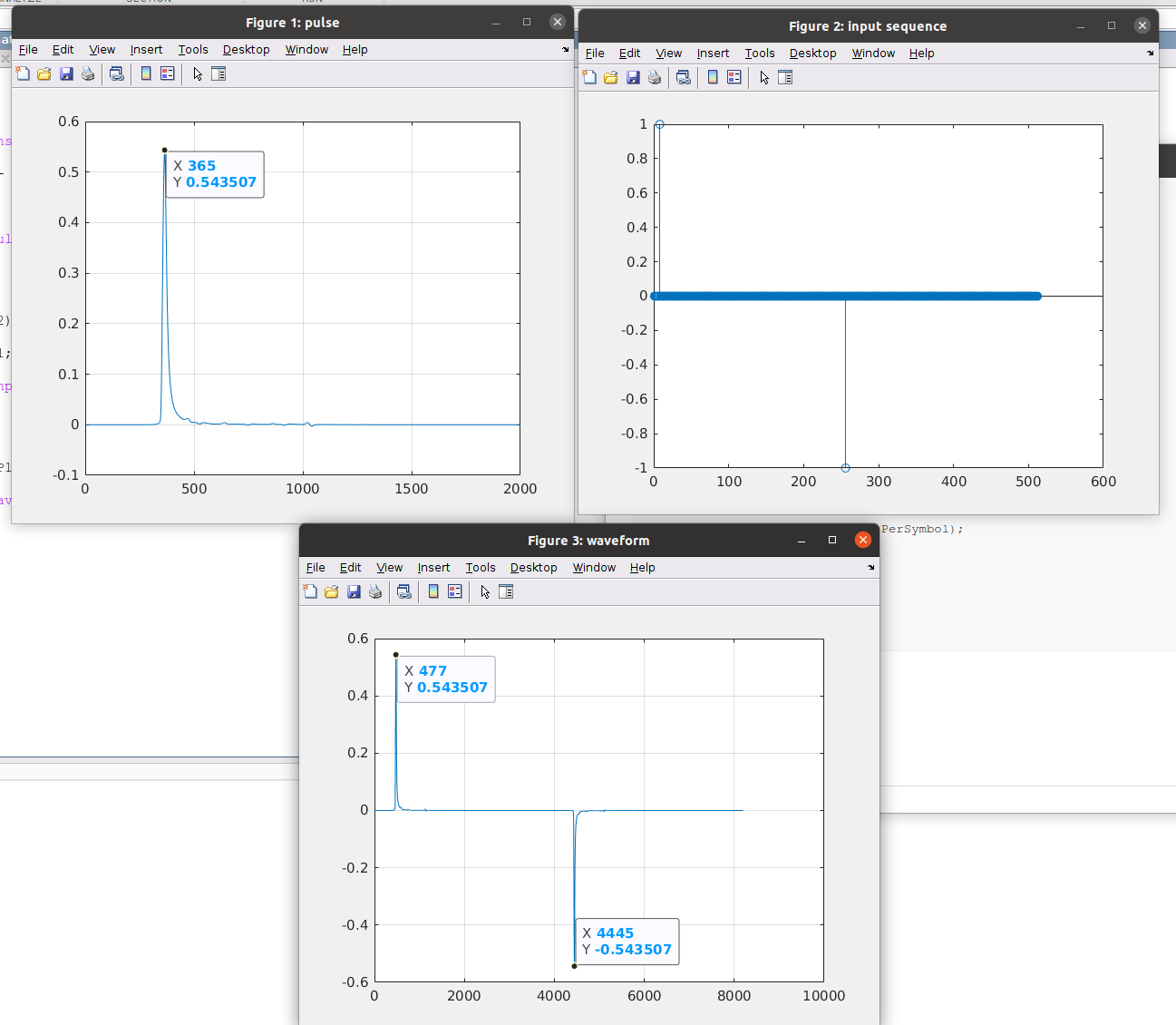Matlab toolbox
impulse2pulse
serdes/impulse2pulse.m
1 | function P = impulse2pulse(I, N, dt) |
\[ P_k = \Delta t \times \sum_j I_j \]
impulse2step
serdes/impulse2step.m
1 | function S = impulse2step(I,dt) |
\[ S_k = S_{k-1} + I_{k-1}\times \Delta t \]
step2impulse
serdes/step2impulse.m
1 | function I = step2impulse(S,dt) |
\[ I_k = \frac{S_{k+1}- S_{k}}{\Delta t} \]
pulse2impulse
serdes/pulse2impulse.m
1 | function I = pulse2impulse(P, N, dt ) |
pulse2wave
serdes/pulse2wave.m
% The algorithms utilizes circular convolution to project the pulse
% response onto the data pattern.
1 | close all; |

pulse2pda
B. K. Casper, M. Haycock and R. Mooney, "An accurate and efficient analysis method for multi-Gb/s chip-to-chip signaling schemes," 2002 Symposium on VLSI Circuits. Digest of Technical Papers (Cat. No.02CH37302), Honolulu, HI, USA, 2002, pp. 54-57, doi: 10.1109/VLSIC.2002.1015043.
Chang, Wei-Ju and Ruey-Beei Wu. “Eye diagram estimation and equalizer design method for PAM4.” 2018 IEEE 22nd Workshop on Signal and Power Integrity (SPI) (2018): 1-4.